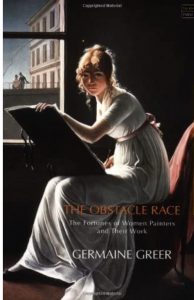Art HERstory
with Jane Keller Herzig
Course description:
11 Session Zoom Course that focuses on women painters, their lives and output, from the 1540s to the 1840s. For the most part, these genius women are not known, and the question as to why is central to the conversation. Each Session – 1 1/2 hour: 1 hour slide lecture followed by 1/2 hr discussion. To participate, see below.
Jane Keller Herzig was on the founding board of SOCCA – Southington Community Cultural Arts (southingtonarts.org) and continues to have a keen interest in supporting this state of the arts cultural institution. To show your appreciation of Jane’s wonderful gift to us, you may wish to make a donation in her name to SOCCA, which may be sent via its website.
The topics for the 11 sessions are as follows:
-
Session 1: Materials and Techniques – a survey of materials and techniques utilized by artists, starting with prehistoric cave paintings, and ending in the 19th century.
-
Session 2: An Uneven Playing Field with Barriers, Potholes and Moving Goal Posts. During this session we discover how a much-loved painting in a major museum, once thought the work of a famous 19th century artist, was indeed painted by a previously unknown woman. How the painting was re-attributed is a visual adventure. We also look at the barriers that women had to overcome in order to become recognized artists.
-
Session 3: Sofonisba Anguissola c 1532-1625. As a lady-in-waiting for Queen Isabel in the court of Philip II of Spain, Anguissola was an eminent portrait painter in King Philip’s court.
-
Session 4. Lavinia Fontana 1552-1614. Daughter of a Bolognese painter, Fontana was one of the most sought after and highest paid painters in all of Italy during the 16th century.
-
Session 5. Artemisia Gentileschi 1593-1656. Rediscovered in 1916, and today considered one of the most eminent Italian painters of the Baroque era, Artemisia’s story and her artwork are compelling.
-
Session 6. Judith Leyster 1609-1660. Lost to art history, and rediscovered during the 1890’s, Leyster’s luminous work was until then thought to have been created by the eminent Dutch painter Frans Hals.
-
Session 7: Clara Peeters 1580’s-1657?, and Maria van Oosterwyck 1630-1693. During Session 7 we will do a brief survey of genre painting during the Dutch Golden Age of painting, and will focus on two remarkable still life painters – Clara Peeters and Maria van Oosterwyck.
-
Session 8: Rachel Ruysch 1664-1750. Brilliant painter who was able to meld creatures and plants from far off places into her meticulously crafted floral still-life pieces.
-
Session 9: Maria Sibylla Merian 1647-1717. Merian was a printmaker. At 13, she was the first person to record and paint the complete metamorphosis of a caterpillar to silk moth. During her long and adventurous life she was able to capture her observations of nature with brilliance and accuracy.
-
Session 10: Adélaïde Labille-Guiard 1749-1803. Labille-Guiard was an eminent portrait painter who lived in Paris before, during and after the French Revolution
-
Session 11. Elisabeth Vigée Le Brun 1755-1842. Contemporary of Labille-Guiard, as painter of Marie-Antoinette, had to flee France during the French Revolution.

